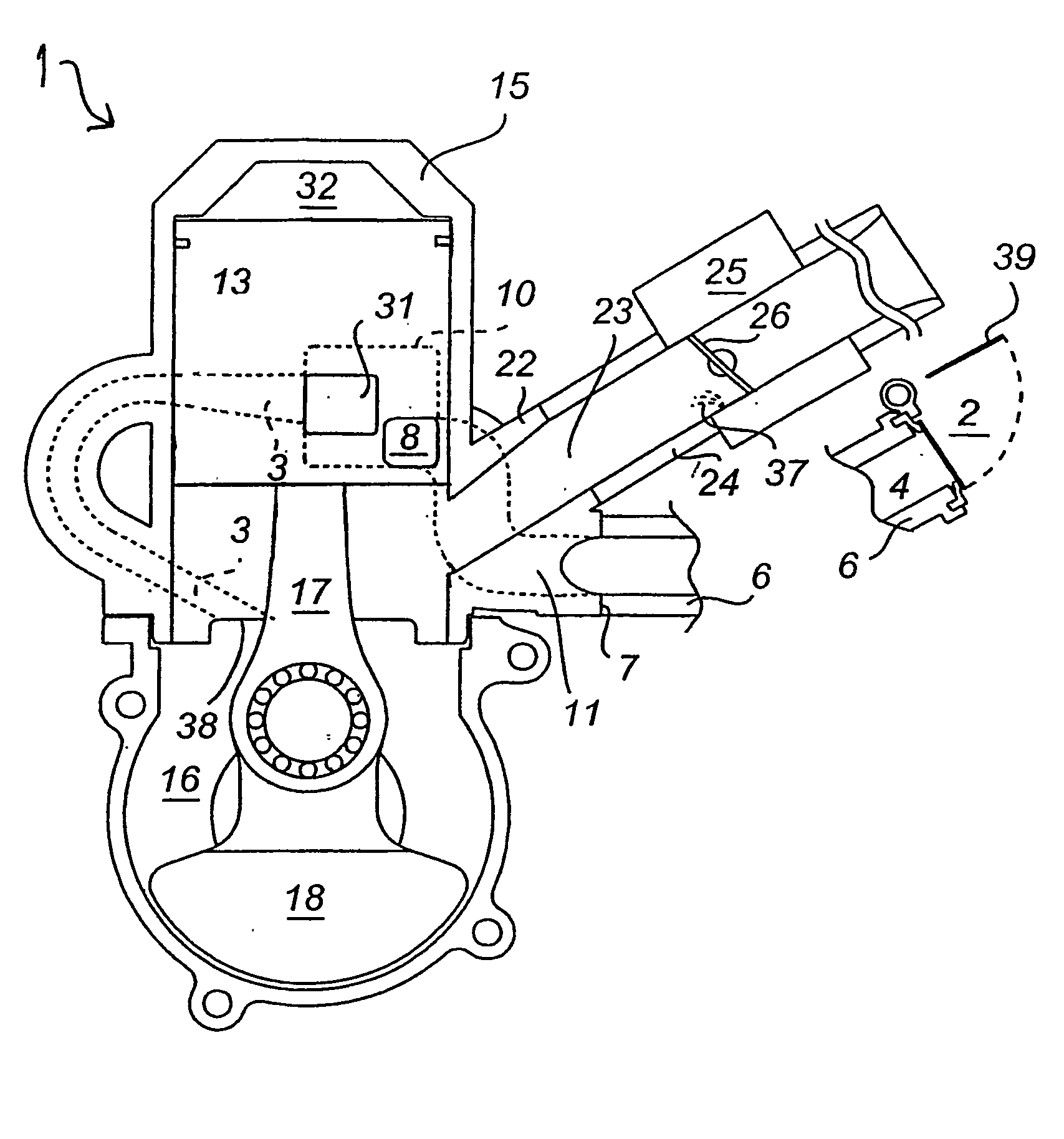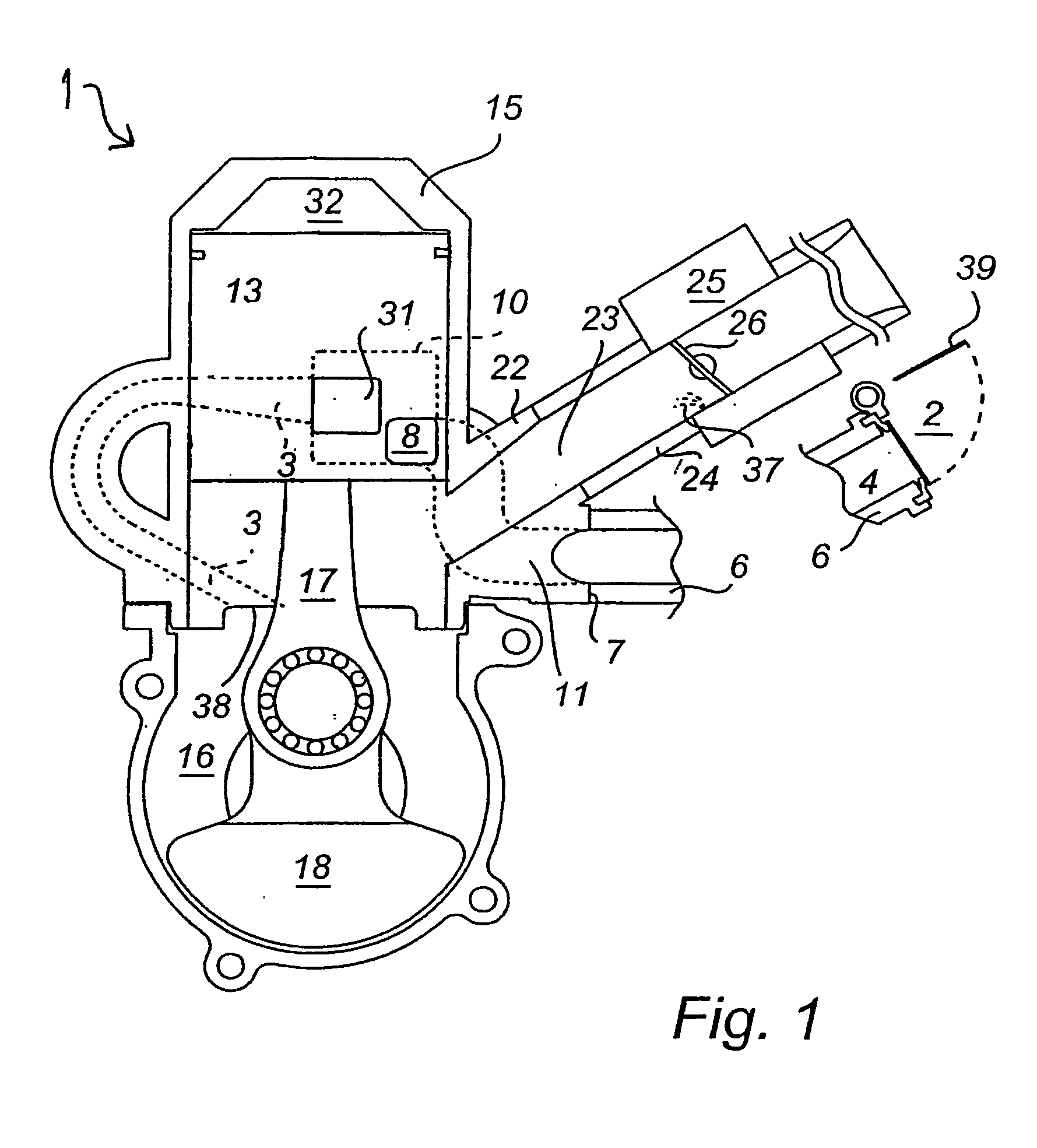Two-stroke engine
a two-stroke engine and crankcase technology, applied in combustion engines, machines/engines, mechanical equipment, etc., can solve the problems of low emission of nosub>x /sub>x, inherently low emission of unburned hydrocarbons (uhc) and carbon monoxide (co), and severe drawbacks in engine cooling, lubrication and engine behaviour
- Summary
- Abstract
- Description
- Claims
- Application Information
AI Technical Summary
Benefits of technology
Problems solved by technology
Method used
Image
Examples
Embodiment Construction
[0031] In this description, like reference numerals of which one is denoted with implies that there are identical components on opposite sides of the engine. Due to clarity reasons, only one of such components is shown in the drawing
[0032] In FIG. 1, a carburetted two-stroke engine 1 utilising an “air-head” scavenging system is shown. The engine comprises a cylinder 15 and a piston 13 being connected to a crankshaft 18 by means of a connecting rod 17, which piston in co-operation with the cylinder defines a combustion chamber 32. The piston is also equipped with flow paths 10, 10′, in the form of recesses. The function of these recesses will be described in the following. Further, the engine comprises an inlet 22 connected to a carburettor, or fuel dosage means, 37 by an inlet duct 23. The piston, the lower end of the cylinder and a crankcase define a generally sealed crankcase volume 16, into which the inlet 22 opens. The crankcase is connected to the cylinder by means of transfer...
PUM
 Login to view more
Login to view more Abstract
Description
Claims
Application Information
 Login to view more
Login to view more - R&D Engineer
- R&D Manager
- IP Professional
- Industry Leading Data Capabilities
- Powerful AI technology
- Patent DNA Extraction
Browse by: Latest US Patents, China's latest patents, Technical Efficacy Thesaurus, Application Domain, Technology Topic.
© 2024 PatSnap. All rights reserved.Legal|Privacy policy|Modern Slavery Act Transparency Statement|Sitemap


